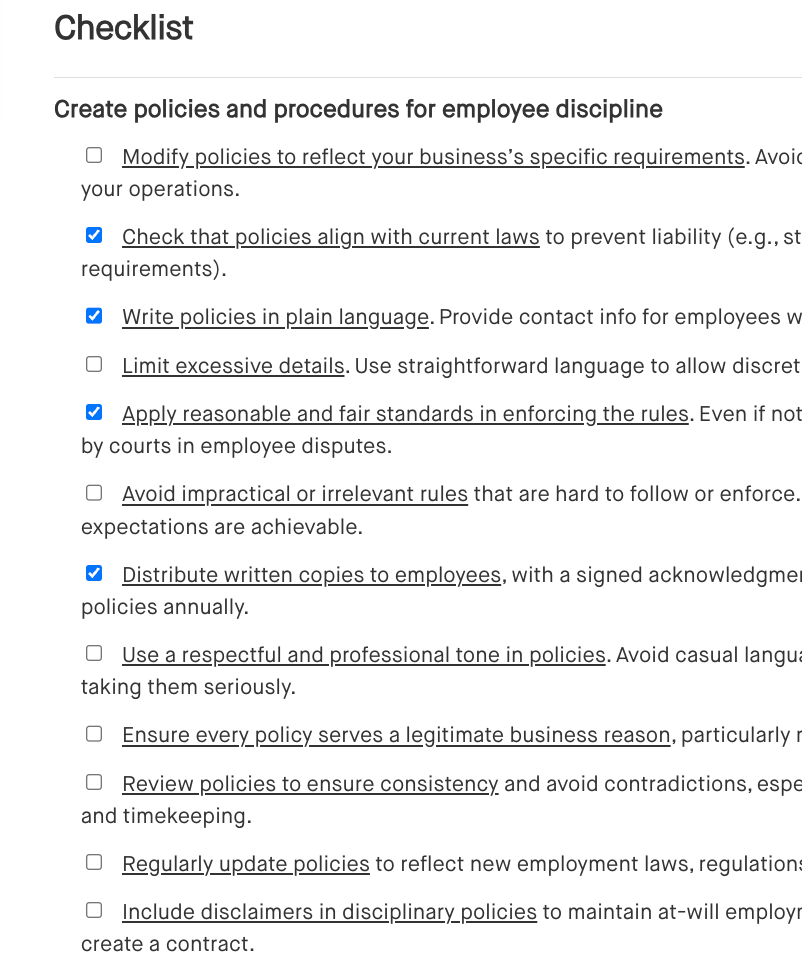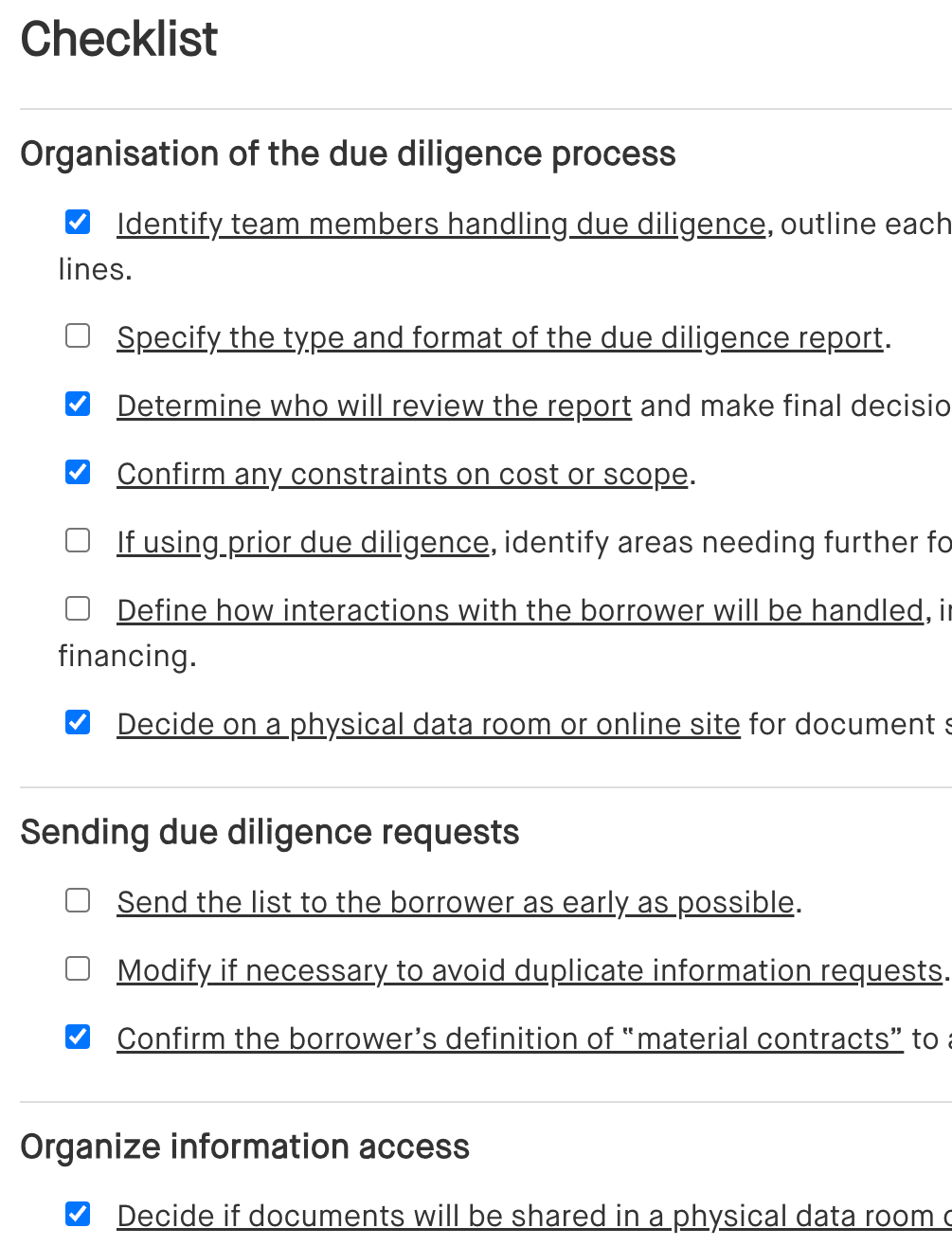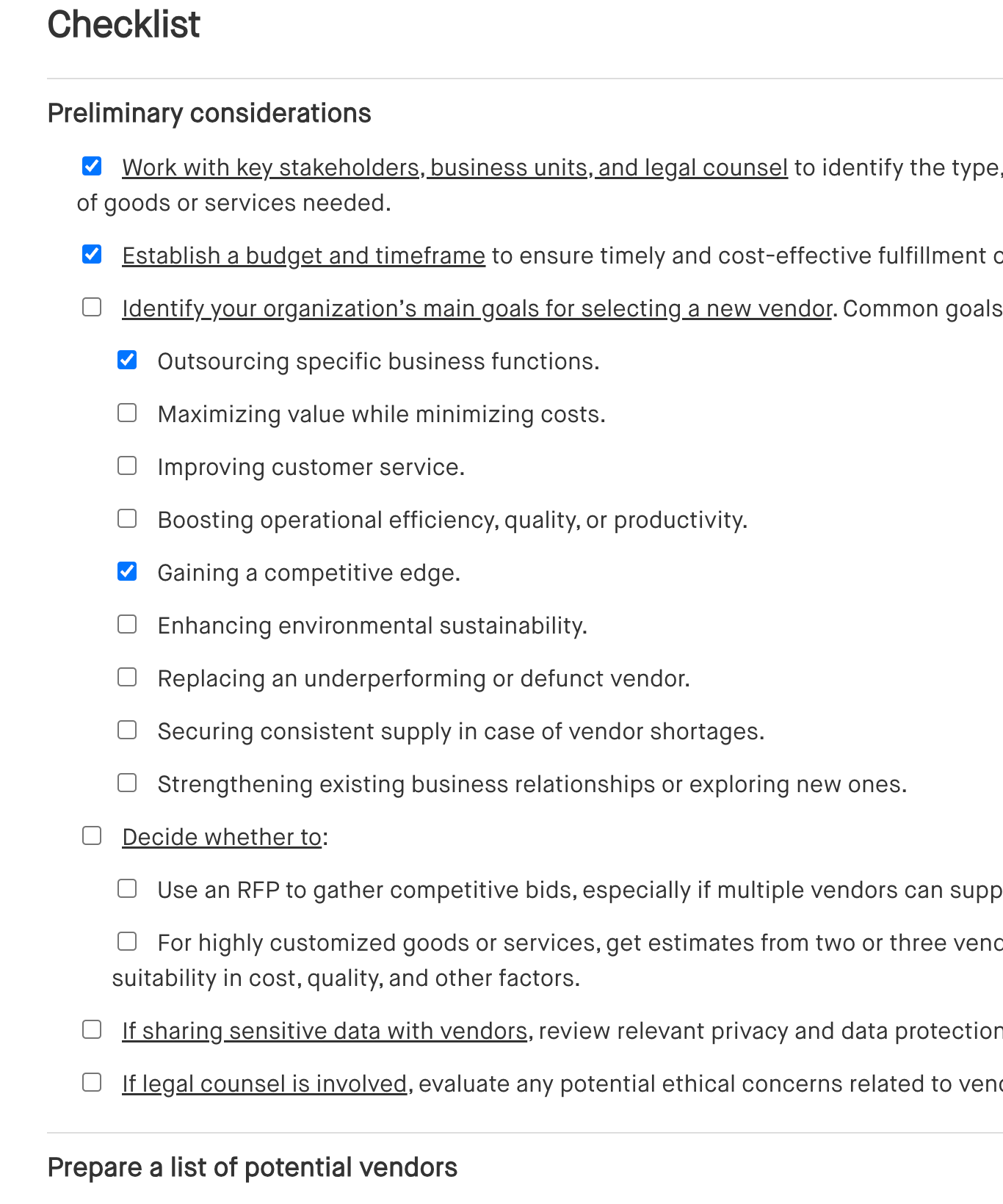Departing employee: Free checklist
Departing employee checklist
Managing an employee’s departure—whether voluntary or involuntary—requires a clear, structured approach to protect the company’s legal and operational interests. This departing employee checklist covers everything from collecting essential documents to securing company assets and addressing any post-employment obligations. By using this checklist, you’ll ensure compliance with legal requirements, safeguard company data, and minimize any risks during the transition.
This checklist will help you collect necessary employment records and documents, handle all financial and legal responsibilities such as final paychecks and benefits, protect against security breaches by revoking access to systems and retrieving company property, and ensure a smooth transfer of job duties to maintain business continuity.
How to use this departing employee checklist
Here’s how to use the departing employee checklist effectively:
- Follow the process: This checklist takes you through each step of handling an employee’s departure, from collecting records to managing post-employment obligations. Use it to ensure all tasks are completed efficiently and nothing is overlooked.
- Adapt to your situation: Tailor the checklist to your company’s specific policies, employee agreements, and the nature of the departure (whether voluntary or involuntary). Make sure to account for any legal or contractual obligations.
- Engage key stakeholders: Ensure that HR, legal teams, and managers are involved throughout the process, especially when handling sensitive documents, legal requirements, or any potential security risks.
- Stay organized: Mark off each completed task to keep track of the process and ensure smooth coordination across departments. This helps prevent delays and ensures a thorough exit process.
- Review and update: Make sure to review this checklist periodically to ensure it aligns with any updates in employment laws, company policies, or internal processes.
Checklist
Benefits of using a departing employee checklist
Using a departing employee checklist helps your company manage the exit process efficiently, protecting both legal and operational interests. Here’s how it helps:
- Compliance with legal obligations: Ensures you meet state and local laws regarding final paychecks, benefits, and notice requirements, reducing the risk of legal claims.
- Data security: Safeguards company information by revoking access to systems and ensuring the return of company property like computers and access cards.
- Clear documentation: Helps you document every step of the exit process, ensuring you have a record of the termination or resignation in case of future disputes.
- Business continuity: Guides you through the transition of job duties, ensuring that projects are transferred smoothly and that there's no disruption to business operations.
- Minimized risks: By addressing post-employment obligations like non-competes and confidentiality agreements, the checklist helps reduce the risk of legal or reputational damage.
Frequently asked questions (FAQs)
Q: Why do I need a departing employee checklist?
A: A checklist ensures that the exit process is handled consistently and thoroughly, helping you manage legal obligations, retrieve company property, and avoid potential risks during the employee’s departure.
Q: What happens if we forget to revoke system access?
A: Failing to revoke system access can lead to data breaches, misuse of confidential information, or unauthorized access to company systems. The checklist helps ensure that security protocols are followed.
Q: Is an exit interview necessary?
A: While not required, exit interviews can provide valuable insights into workplace issues or potential legal risks. They also help reinforce the employee’s post-employment obligations.
Q: How do I handle a departing employee who owes the company money?
A: The checklist advises on handling debts or outstanding loans, ensuring you follow wage and hour laws when setting up a repayment plan.
Q: When should we review the departing employee checklist?
A: It’s a good practice to review and update the checklist regularly to stay compliant with changing laws and ensure that company policies are up to date.
This article contains general legal information and does not contain legal advice. Cobrief is not a law firm or a substitute for an attorney or law firm. The law is complex and changes often. For legal advice, please ask a lawyer.


